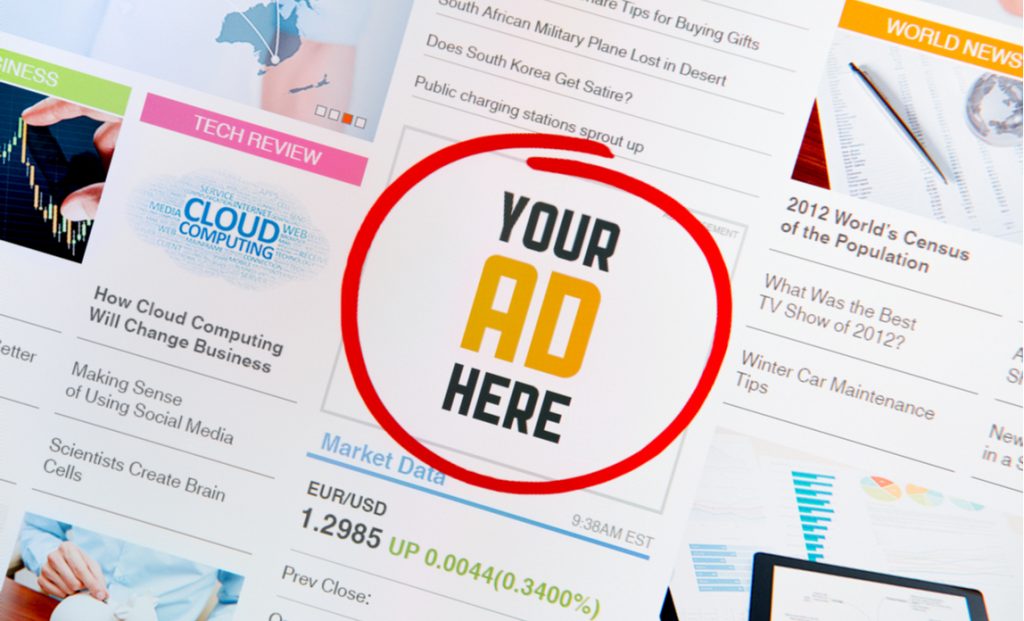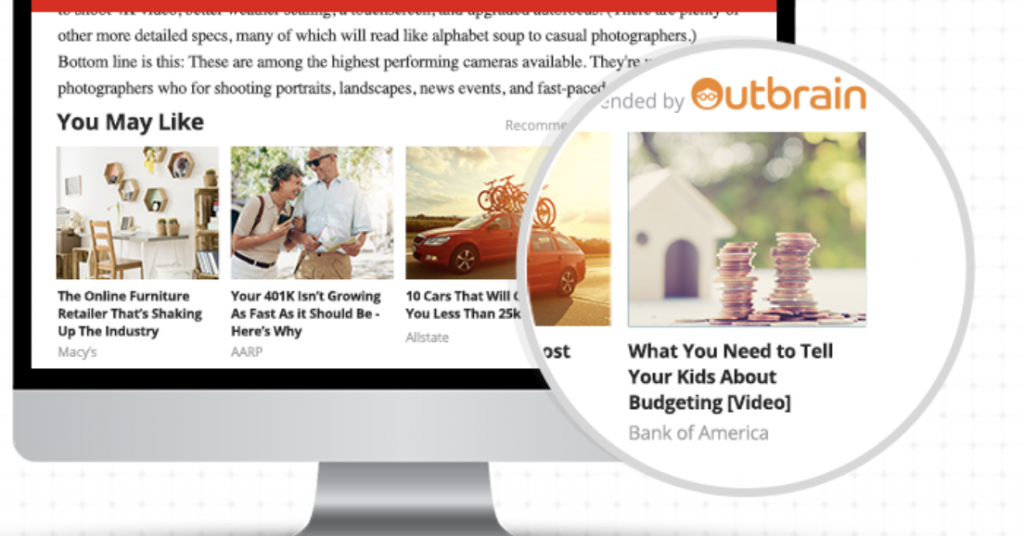4 Paid Traffic Sources Online Marketer Should Test
Marketers have a lot to gain by paying for traffic, as it is a powerful tool. According to e-marketer survey conducted in 2018, compared to the email lists and websites, likes of Facebook and other social media ads are considered as the most productive marketing strategy by 42% of small and medium scale enterprises.
Aside from Facebook, paid traffics can be generated from other sources. Ideally, a paid traffic source is any means that can drive leads to your businesses.
Some of the most significant paid traffic sources include:
- Display ads – the little ads that pop up on the side of your page, which are usually blocked by your ad blocker.
- Sponsored Contents – these are articles that show on a website or a print mag. They are referred to as content marketing for a specific brand.
- Paid Searches – this includes Bing Ads, Google AdWords, among others.
- Influencer marketing – this is a kind of paid traffic where a social media influencer helps promotes a product or brand to their fans.
- Social Media Ads – these are sponsored contents which are displayed on Twitter, Facebook, and an Instagram feed. Also, the short clip that plays before your YouTube video plays belongs to the same category.
- Paid discovery – this includes the contents which are pitched by networks such as Outbrain Amplify.
There are several means of payment depending on the sort of marketing which you would like to engage. For instance, you may pay per view (PPV), pay per click (PPC), or pay per action (PPA). Also, there is a flat rate payment option where you can purchase a specific number of posts from an influencer. Or, use the conventional display advertisement where you pay to keep your ad on a show for a specified period.
When it comes to marketing, you have several options to choose from. However, one of the most crucial factors is to decide what works best for your brand – which can take some solid thinking.
To grow a business, a combination of organic and paid traffic has been proven to be the most effective method. However, the right combination will depend highly on your target audience. While assessing the paid traffic sources to use, below are five proven means to consider.

Google Ads
Although Google Ads is a conventional method, and the cost per click is on the high side; however, the end-product is hugely outstanding. Basically, you will have to select a keyword which you believe that your prospective customers always use while searching. Then, you will bid for placing your ads among the sponsored search results that are usually displayed on the top page.
Truly, with the evolution of online advertising, Google Ads has also become more effective over time. Currently, there are the dynamic search ads that allow the user to tailor their ads according to the content on their website as well as the searches which the target audience are making without having to look for a list of keyword now and then.
Also, Google Ads allows users to bid for adjustments based on the geographic location of the target audience, demographic group as well as devices. Additionally, it will enable you to retarget individuals who have visited your website in the past. By targeting your AdWords specifically, you will be increasing your chances of success. Try to determine human behaviors that work best for your brand through experimentation and ensure that you record the changes that lead to excellent outputs.
Besides, Google uses the Google Display Network to offer display ads. However, in these contemporary times, display ads get undeserved reputations for some reasons. For clarity, Nielsen Norman Group has provided a heat-map study that shows how individuals with no ad blockers neglect display ads. Check the image below.
Concurrently, 90% of individuals in the digital world experience GDN. The key factors are audience and keywords, regardless of whether GDN ads work for you or not. However, if you AdWords are bringing in the much-needed traffic, then consider it. For more details, check out this flowchart – it will help guide your decision-making.
In summary
- Presently, Google Ads provides several targeting and remarketing features. Thus, endeavor to test-run many times to determine what works for you.
- Google Display Ads may not be effective for most enterprises; however, you can give it a shot if your Google Ads is productive.
Facebooks Ads
According to 95.8% of social media managers, they get their best ROI from Facebook among other social platforms. If you are paying for traffic, you are best advised to use Facebook ads. Be informed that Facebooks comes with several features, which are regularly changing. The massive social platform allows you to place your ad in the newsfeed, messenger, audience network, and even Instagram. More so, it will enable you to target audience based on age, region, or interest. In fact, with the lookalike audiences feature, it allows you to find prospective customers similar to a group that already works for you. With Facebook, the use of text, images, collections, slideshows, or video is possible for your ads. In other words, Facebook allows you to find the exact group of people that you would like to reach.
That’s not all; Facebook enables users to develop dynamic or static campaigns, retargeting campaigns, high-budget campaigns, low-budget campaigns, massive campaigns, and small campaigns. Also, Facebook lead ads are available, which ensures that people provide their details with ease. There is the link ads option which refers people to your website. Endeavor to check out for ads that contain in-Facebook product catalogs, which offers automatic retargeting service.
With Facebook ads, you have a lot to learn, but starting the process is quite easy. Consider specialist like Jon Loomer if you want to know the practices at best. Also, several tools are available that allows you to optimize your campaign with basic knowledge.
In summary
- Advantage: Several features are available.
- Disadvantage: Several features are available.
- Get in touch with the Professionals if you need help – or start testing the tools and find out what works for you.
Outbrain Amplify
Compared to Facebooks Ads and Google Ads , Outbrain functions differently. And the “different way” is that ads are not done through the method; instead, it provides a platform where you can drop a link to your engaging content. It can be considered as a center to begin a relationship with prospective clients. From the platform, you can bring them down the funnel by offering valuable, impressive, and attractive content.
Amplify shares an attribute with Facebook and Google Ads in that it offers a cost-per-click bidding system. Also, it allows you to test several headlines that lead to a single content. Other features include lookalike audiences, geographic targeting, custom audiences, device targeting, among others.
Also, you will be getting traffic from top-quality sources through the services of a premium network of publishers. The most important aspect is that the algorithms responsible for content discovery platform work consistently to figure out the most targeted people for your contents. According to a study performed in 2016, individuals that visit Outbrain’s content recommendations have more engagement than people visits through search or social platforms. The image below is the outcome of the study:
Aside from the upper-funnel, check how One King’s Lane worked with Custom Audiences tool to increase conversions four times than ever.
In summary
- Content delivery can reach clients regardless of their position in the sales funnel.
- Conversions are driven by retargeting.

Outbrain Native ads
LinkedIn Ads
The native ads of LinkedIn is a highly effective paid traffic source, most especially for those in the B2B market. With the native ads, it is possible to target the guests who have visited your website before; target based on industry, region, demographics, or title; and lastly, target according to contact or account. Some of the options available include InMail ads, sponsored posts displaying on user’s feed, and a display ad. Also, a pre-filled contact form like those of Facebook lead ads is available. However, the most exciting aspect is that LinkedIn can target an audience based on their business details as well as reach them within the LinkedIn vicinity. Because people stay in “content consumption” mode, discovery has reduced bounce rates compared to social. In the same vein, LinkedIn users are in “professional” mode and can see ads as well as read contents, using a different mindset. Such a quality can be highly useful for the appropriate advertiser – the best users of LinkedIn ads include the higher ed. and recruiters of high-end B2B products and services, according to Marketingland.
Nevertheless, bear in mind that the cost-per-click payment is used for LinkedIn network, which can be quite expensive. Most of the targeting begins at $4.50 per click and nothing less. For instance, check the image below:
In summary
- B2B, recruiters and higher ed. will find LinkedIn as a powerful tool
- Costly but worth every penny for the right advertiser.
Final Note
Several variations are involved in every customer journey; hence, keep in mind that a combination of organic channel and pay-per-click ads are the most effective means of driving prospects down the funnel. With the explanations given above, all that you need to achieve the desired results of paid traffic sources are developing trust with clients and providing top-quality value.
Have you signed up for a Kick My Ad! account yet?
Experience the leading CPA affiliate network and take advantage of expert advice that’ll make you become a super affiliate!
